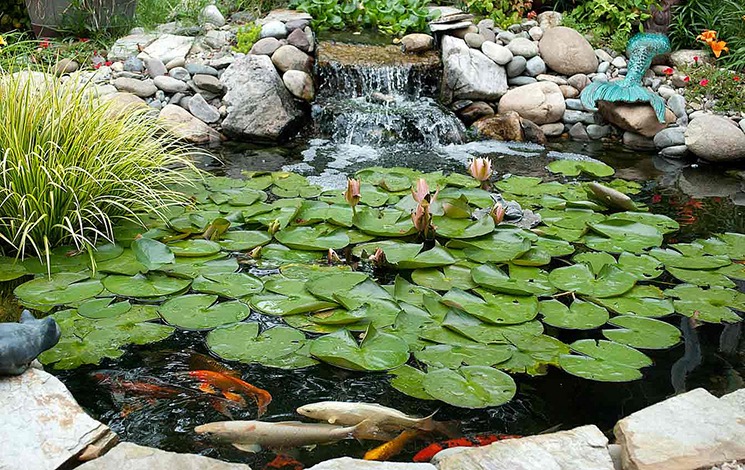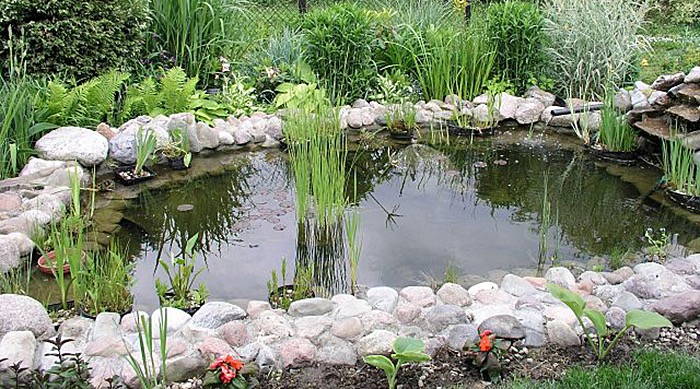Decide on a Fish Pond Liner for Your Pond

What Fish Pond Liner should I Use?
If you are going to work with a fish pond liner, it isn’t rocket science to realize that you need to choose a material that not only fits your budget, but will also work well for the pond you are going to build. Fish ponds can be loads of fun, but unless they are properly prepared and constructed, they can be disappointing and even disastrous.
At worst, a badly built fish pond will leak and then end up having to be broken down and dismantled. But with careful thought and attention, and the use of quality fish pond supplies, your pond will be a place where you can spend quality time.
The Magical Effects of Water in the Garden
Without a doubt, water captivates the senses and it brings magical elements into the garden. Typically it introduces a cleansing, soothing and cooling ambiance. It also gives us an amazing opportunity to introduce both the sight and sound of water into the garden.
Having decided to introduce water to your garden, you can also stock your pond or pool with fish. Fish add yet another wonderful element to the garden, in the form of life, color and movement. They also help to establish a good balance of nature in and around the pond.
So, having decided that water and fish are going to add magic to your own garden or backyard, you will need to decide what kind of construction method you are going to use to create a pond. Undoubtedly, the easiest way is to use some type of liner, either flexible or rigid. That way you won’t have to be bothered with mixing and placing concrete, laying bricks or blocks and then plastering them, or even messing with bentonite clay.
A rigid fish pond liner is the easiest to install, because the entire shell is already preformed to a specific shape. All you have to do is:
- dig a hole the right shape, slightly bigger than the shell
- put the shell into the hole
- make sure it is level
- backfill with soil or sand
- compact the soil
- plant around the pond
The most popular materials for preformed ponds are various thermoplastic materials that are vacuum-molded, and fiberglass.
[ninja_tables id=”2361″]
Flexible liners take a bit more work to install, but they are literally more flexible than rigid liners – in more ways than one. The biggest advantage is that you can create a pond of virtually any size, whereas rigid liners are relatively small. Flexible liners are also generally less expensive that preformed ponds.
Fish Pond Liner Materials
There are various different materials that you can use to line a pond, and in most instances, the more expensive it is, the longer it is likely to last.
Polyethylene (which is essentially just black plastic) is the least expensive, but you need a reasonably thick type to ensure that it doesn’t puncture or tear. It is also a good idea to lay a geofabric material under the plastic to cushion it and prevent sharp objects that may push up from under the liner from piercing it.
Although butyl rubber is probably the most expensive flexible liner available, it isn’t very popular in the United States. In recent years EPDM, an ethylene propylene polymer, has become the favorite for fish ponds.
Another possibility is to use the same vinyl sheeting that is so often used to build swimming pools. But instead of using blue, shop around for black vinyl which will look a lot more natural in your backyard.
Pond liners have to be shielded from sharp objects (for example, stones) below the liner and from being punctured by any objects within the water body. Protection is often done with layers of sand as well as geotextiles (particularly needle-punched non-wovens) and other materials.
Pond liners are manufactured in rolls or accordion-folded and supplied on pallets. When opening and inserting into your pond excavation their edges and ends are overlapped and welded/glued together. Methods are thermal fusion, solvents, adhesives and tapes.
[ninja_tables id=”2121″]







